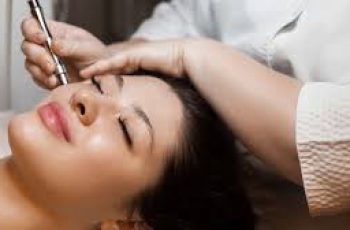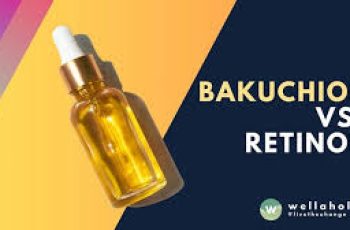
Understanding Bunny Lines: What They Are and How to Treat Them, According to Experts
When it comes to facial wrinkles, most people are familiar with terms like “crow’s feet,” “laugh lines,” or the “elevens” — those two vertical furrows that appear between the eyebrows.
But there’s another, lesser-known type of wrinkle that might be bothering you when you look in the mirror: bunny lines.
Despite their cute name, bunny lines are a common cosmetic concern for many individuals, especially as they age or after undergoing other facial treatments.
In this comprehensive guide, we’ll explore what bunny lines are, what causes them, how they can be treated, and how you might prevent them from becoming more prominent over time.
Whether you’re simply curious or actively seeking treatment, read on to get expert-backed insights and recommendations for managing bunny lines.
What Exactly Are Bunny Lines?
Bunny lines are the small, fine wrinkles that appear on either side of your nose when you wrinkle or scrunch your face, particularly in expressions of amusement, skepticism, or concentration.
The name comes from the resemblance to a rabbit wrinkling its nose — a charming visual, but not always so charming when the wrinkles linger.
According to Dr. Carol Eisenstat, a board-certified physician specializing in aesthetic medicine, bunny lines typically form in a diagonal or horizontal pattern along the upper part of the nose, extending toward the inner corners of the eyes.
At first, they may only appear when you smile or wrinkle your nose.
But over time, as skin loses elasticity and collagen production decreases, these lines can become static — visible even when your face is at rest.
Dr. Usha Rajagopal, a board-certified plastic surgeon, adds that although bunny lines aren’t as widely discussed as other facial wrinkles, they follow the same fundamental principles:
They are dynamic wrinkles, meaning they form as a result of repetitive facial movements.
With enough repetition, the underlying muscle activity causes the skin to fold in the same places, eventually leading to creases that become permanently etched into the skin.
Why Do Bunny Lines Form?
The development of bunny lines is largely attributed to the repeated use of the nasalis muscle, which runs across the bridge and sides of the nose.
When this muscle contracts, the skin above it wrinkles — especially if the same facial expressions are made frequently over many years.
However, unlike universal facial movements like smiling or frowning, scrunching the nose isn’t something everyone does regularly.
Dr. Rajagopal points out that some people naturally use their facial muscles more actively than others — some may habitually crinkle their nose when laughing, reacting with surprise, or even during regular speech.
This variation in facial expressiveness means that not everyone will develop bunny lines to the same extent, if at all.
There’s also a somewhat ironic twist: bunny lines can become more prominent after receiving Botox injections in other areas of the face, such as the forehead or glabella (between the eyebrows).
When those muscles are paralyzed by Botox, your facial expressions may subconsciously recruit different muscles — like the nasalis — to compensate.
As a result, if you frown or squint and those primary muscles aren’t functioning, the secondary muscles like those around the nose might take over, increasing the activity and thus the prominence of bunny lines.
Other contributing factors to bunny lines include:
Genetics: Some people are genetically predisposed to develop wrinkles earlier or more prominently than others.
Aging: As we age, the natural decline in collagen and elastin weakens the skin’s structure, making it more susceptible to folding and creasing.
Sun exposure: UV damage can accelerate collagen breakdown and hasten the appearance of fine lines.
Smoking: Tobacco smoke contributes to skin aging and impairs blood flow, which can exacerbate wrinkle formation.
Skincare habits: Poor skincare can also affect the skin’s overall resilience, leaving it more vulnerable to dynamic lines.
What Are the Treatment Options for Bunny Lines?
If your bunny lines have become more noticeable and you’re looking for ways to smooth them out, the good news is that there are effective treatments available.
According to both Dr. Eisenstat and Dr. Rajagopal, the most effective and commonly recommended approach is the use of neuromodulators, such as Botox, Dysport, or Xeomin.
1. Botox and Other Neuromodulators
Botox works by temporarily relaxing the underlying muscles that cause wrinkles.
When injected into the nasalis muscle, it reduces movement in that area, which in turn diminishes the appearance of bunny lines.
Dr. Eisenstat explains that bunny lines usually require a small dose of Botox — typically between 2 to 4 units per side.
That’s significantly less than the amount used for treating the glabella region (which might require 20–24 units). This makes treatment for bunny lines relatively quick, affordable, and low-risk.
The results generally last between 3 to 4 months, after which the treatment will need to be repeated to maintain the effect.
As with any Botox treatment, results are not permanent, and the goal is to soften, not completely erase, the natural expressions.
2. Dermal Fillers
In some cases, bunny lines may already be etched into the skin, becoming visible even when the face is relaxed.
For these deeper lines, dermal fillers can be used to plump the skin and smooth the wrinkles from within.
Dr. Rajagopal notes that very thin, soft fillers like Juvederm Volbella or Restylane Refyne are best suited for this area because of the delicate nature of the skin around the nose.
Only a very small amount is required, and filler treatment is often considered a complementary procedure — usually performed during broader facial rejuvenation treatments where some filler is left over.
Preventing Bunny Lines: Can You Keep Them From Forming?
While some factors like genetics and aging are beyond your control, there are still proactive steps you can take to help delay the onset of bunny lines or keep them from deepening further.
1. Be Aware of Facial Movements
One of the best things you can do is to become more mindful of your facial habits.
While it’s not realistic to stop expressing emotion, you can reduce unnecessary facial movements — such as frequently scrunching your nose — if you notice this is something you do habitually.
2. Monitor Expressions Post-Botox
If you’ve had Botox injected into other areas of your face (especially the forehead or frown lines), pay close attention to how your expressions change.
Sometimes, patients unintentionally overuse the nasalis muscle to compensate for reduced mobility elsewhere.
If you notice new lines appearing after Botox, let your provider know — they may be able to adjust your treatment plan.
3. Practice Good Skincare
As always, maintaining a robust skincare routine can go a long way in supporting skin health.
While skincare alone won’t prevent dynamic wrinkles, it can improve skin texture, hydration, and elasticity, making it less prone to deep creases.
Dr. Eisenstat recommends incorporating:
Daily sunscreen (SPF 30 or higher) to protect against UV damage.
Topical retinoids (prescription or over-the-counter) to boost collagen production.
Hydrating ingredients like hyaluronic acid to keep skin supple and plump.
Are Bunny Lines Harmful or Just Cosmetic?
It’s important to note that bunny lines are not a health concern — they are a completely normal sign of aging and expression.
Whether or not to treat them is a personal decision, entirely based on how you feel about their appearance.
Some people embrace these natural changes, while others prefer a smoother look. Either choice is perfectly valid.
Final Thoughts: Treating and Embracing Your Natural Expressions
Bunny lines, though often overlooked in conversations about aging, are a natural part of facial expressiveness and aging.
While not everyone gets them — and not everyone is bothered by them — they can become more noticeable over time or after receiving Botox elsewhere on the face.
Fortunately, treatments like Botox and fillers offer highly effective solutions with minimal invasiveness.
And with thoughtful prevention — including good skincare and awareness of facial movements — you may be able to reduce their impact altogether.
Ultimately, it’s all about feeling confident in your skin, whether that means embracing every wrinkle or seeking subtle enhancements to smooth things out.
The choice is yours — and the options are plenty.


